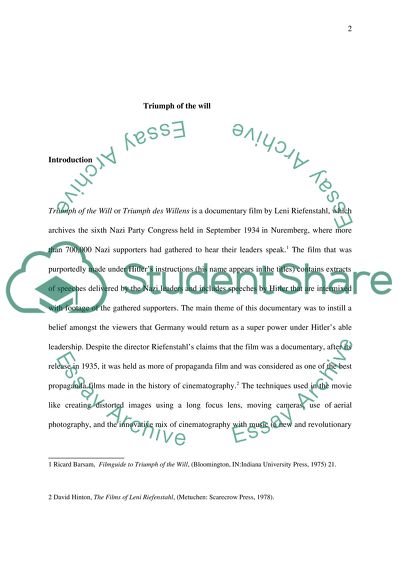Cite this document
(“Triumph of The Will - film by Leni Riefenstahl Research Paper”, n.d.)
Triumph of The Will - film by Leni Riefenstahl Research Paper. Retrieved from https://studentshare.org/history/1400643-triumph-of-the-will-film-by-leni-riefenstahl
Triumph of The Will - film by Leni Riefenstahl Research Paper. Retrieved from https://studentshare.org/history/1400643-triumph-of-the-will-film-by-leni-riefenstahl
(Triumph of The Will - Film by Leni Riefenstahl Research Paper)
Triumph of The Will - Film by Leni Riefenstahl Research Paper. https://studentshare.org/history/1400643-triumph-of-the-will-film-by-leni-riefenstahl.
Triumph of The Will - Film by Leni Riefenstahl Research Paper. https://studentshare.org/history/1400643-triumph-of-the-will-film-by-leni-riefenstahl.
“Triumph of The Will - Film by Leni Riefenstahl Research Paper”, n.d. https://studentshare.org/history/1400643-triumph-of-the-will-film-by-leni-riefenstahl.


